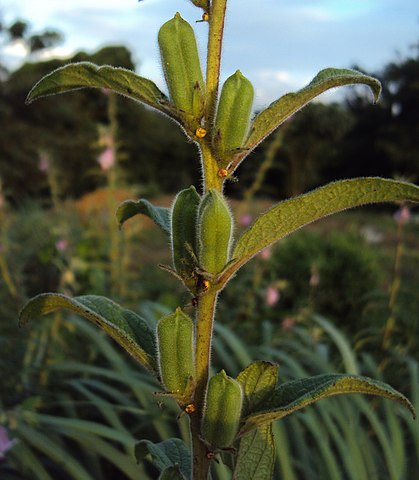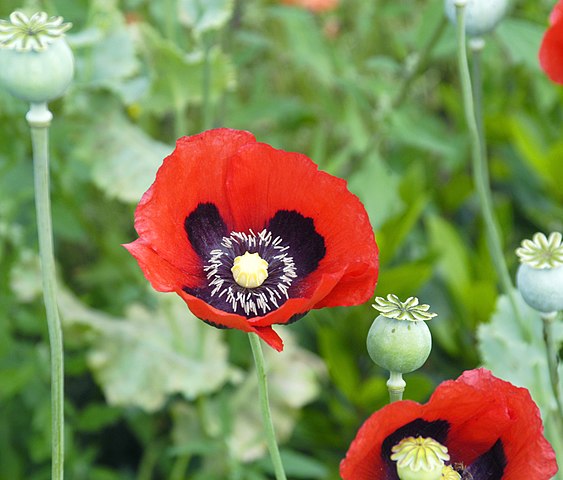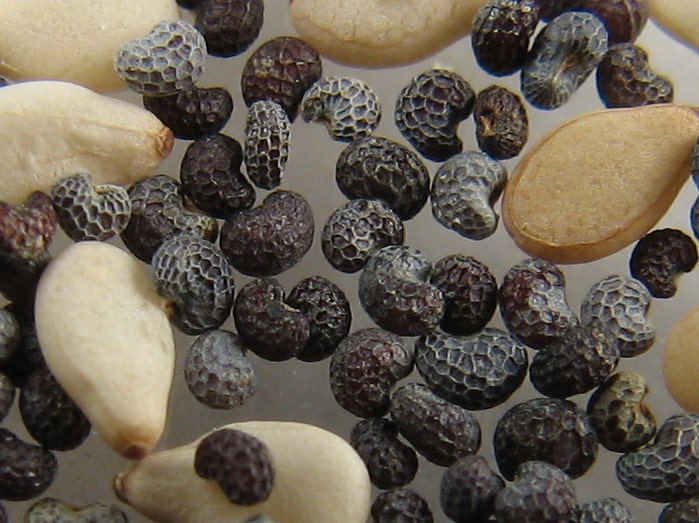Where do sesame seeds come from?
Are you curious about where sesame seeds come from? Read this post to learn more about the plant that produces these seeds.
Sesame seeds have many uses in the kitchen and are used both raw and toasted, or in the shape of sesame oil.
They are an ingredient that is sprinkled on countless pastry and bakery products, used to give crunchy and tasty coating to meat products, added to vegetable salads, and in many other recipes.
The sesame seeds are especially famous in the Indian cuisine.
Despite their popularity, not many people know where the sesame seeds come from and which plant produces them.
There are also some confusions regarding sesame seeds. Thus, we will also talk about some of these in this article.
Sesame seeds are the seeds of the sesame plant, scientifically known as “Sesamum indicum.”
Contents
The Sesame Plant (Sesamum Indicum)
Sesame is a herbaceous annual plant in the family Pedaliaceae, genus Sesamum. It is native to India and was domesticated from wild African species more than 3,000 years ago. It is currently naturalized and cultivated for its seeds in many tropical and subtropical regions around the world.
The largest sesame seed-producing countries are African and Asian countries such as Sudan, Myanmar, India, Nigeria, and Tanzania.
Sesamum indicum is fairly easy to grow because it can thrive in difficult conditions, has good resistance to drought and high temperatures, and does not require much care.
The sesame plant usually does not exceed 40 inches (1m) in height and has a hairy stem with opposite leaves growing along its entire length.

The leaves are broad lanceolate at the bottom of the plant and become narrower towards the upper part of the plant.
The flowers are tubular (bell-shaped) and elongated. Their color may vary from white to blue, or purple.

Its fruits are elongated capsules, divided into 4 to 12 rectangular chambers that contain numerous tiny seeds. These capsules burst open and release the seeds when they are ripe.


The seeds have variable sizes depending on one cultivar to another, have an ovate shape, are flattened, and are slightly thinner at one end. Their color can vary from white to black, brown, red, or tan.
Are sesame seeds and poppy seeds the same?
No. Even though both sesame and poppy seeds are often used to give flavor to pastries and bakery products and are frequently used as a substitute for eachother, they are not the same thing and are produced by two different plants.
The sesame seeds are produced by Sesamum indicum (the sesame plant), while the poppy seeds are produced by Papaver somniferum (the poppy plant).

There are also multiple differences between the sesame and poppy seeds both in appearance and taste.
Poppy seeds are grey-to-black, have a bean shape, or almost sperical, and are smaller, while the sesame seeds can have several colors (depending on the cultivar), are larger, have a slightly flattened shape, and are tapered at one end.

Are sesame seeds considered nuts?
No, the sesame seeds are classified as seeds.
However, they do contain some type of proteins that are also present in certain nuts, and according to NAQ Nutrition, they may trigger an allergic reaction in individuals who have a nut allergy.
Are raw sesame seeds edible?
Yes, the sesame seeds can be consumed both raw, toasted, or baked in various recipes.
Are sesame seeds good for you?
Yes, as long as you are not allergic to them, the sesame seeds are a great source of healthy fats, proteins, fibers, vitamins, minerals, antioxidants, and other compounds.
Sesame seeds are especially appreciated for their oleic and linoleic fatty acids known to lower the bad low-density lipoprotein (LDL) cholesterol and increase the good high-density lipoprotein (HDL) cholesterol, according to healthyeating.sfgate.com.
They are also an excellent source of B complex vitamins (niacin, thiamine, and riboflavin).
Additionally, they also include important minerals, such as calcium, magnesium, iron, zinc, selenium and copper.
Be cautious when consuming sesame seeds if you have known food allergies, especially to certain types of nuts.
According to Healthline, more than 300,000 Americans may have a sesame seed allergy.


